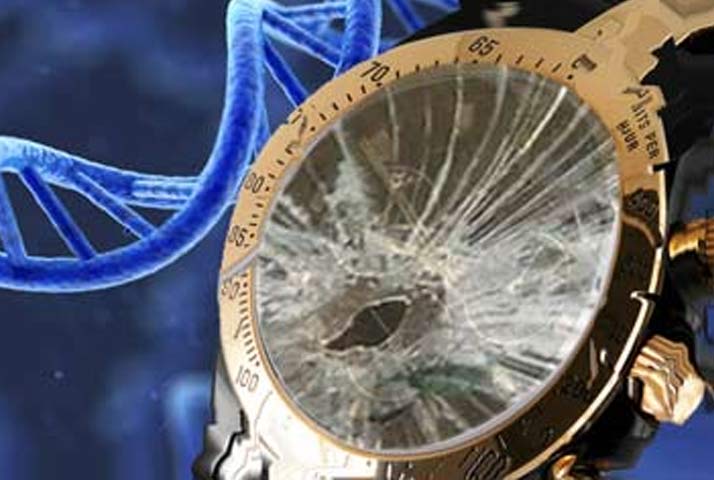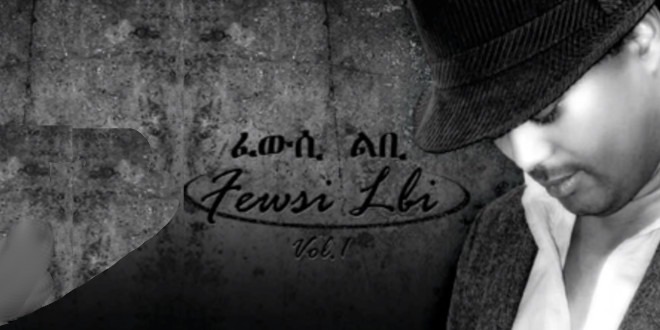The Smashed Eritrean Wristwatch

Some anecdotes are timeless, I will tell you an old one: Adey Tekh’a, was a very old senile woman. A combatant asked her how old she was. She tried to remember, “Since I was baptized as Tekh’a, since I shepherded the goats. What! I could be 400 or 500 hundred years old! ” እምቧዕ!፡ተኽኣ ካብ ዝበሃል፡ ኣጣል ካብ ዝወፍር፡ አማእት፣ አረባዕተ ወይ ሓሙሽተ ሚእቲ ዓመት ገረ ‘ኸውን!”
The combatant remarked, “She thinks she is Prophet Noah!”
It has been 400 or 500 hundred years since the ELF and EPLF rivalry ceased to exist. It has also been that long since Isaias killed the historical EPLF and replaced it with the PFDJ under the control of the “Valineki Clique”(1) . Since then he has left behind a trail of blood and tears that explains the long years of oppression. Since then, Methuselah has died, Prophet Noah has died, and many others have .
Mr. Rolex was his nickname
After years at sea, a sailor from Massawa disembarked in Italy and finally ended up working in Switzerland. In the eighties he was so old, he returned to Eritrea with an impressive Rolex wristwatch that displayed the year, the month and the date. They nicknamed him Mr. Rolex. On May 24,1991, the day Eritrea became independent, he died in a car accident. His Rolex watch was smashed. Today it is kept with one of his relatives in Massawa, and it still reads: 12:01, May 24, 1991–more about this story in the last sentence of this edition.
What happened before Mr. Rolex’s watch stopped is the legacy of all Eritreans. It is their history, and they own all its aspects: its sad parts, its glories, and its nostalgic memories. Eritreans own all the epic struggle, from Adal to Afaabet, from Togoruba to Adi Hawesha. Even the history of the gorges of Sahil and Karneshim where Eritrea’s children killed each other. Even Dembelass and Weki Dbba where Eritrean sellouts participated in the massacres.
Except for a few who insist on measuring time by the stopped Rolex watch, the rest do not even have watches. They don’t argue over trivial issues: whether it is a women’s’ or a men’s watch; whether it is appropriate to put a watch on the right or left wrist; whether it is Japanese or Swiss made. These are old topics, as old as ELF-EPLF topics. About 500 years old.
The Social problems
Unresolved social issues do not die out, they pop up every now and then. And Eritrea has several social issues that are the cause of the mistrust that we complain about. It exists across all social levels though many wrongly (or purposely) think it is a monopoly of the opposition camp. The difference is, while the mistrust among the opposition is visible and is freely talked about, the PFDJ side is insulated from such scrutiny because it controls the state apparatus, particularly the media and the security network. Unfortunately, there is a general tendency among Eritreans to downplay the social problems. But the sleek among us try to define it as a sole byproduct of the struggle era. Worse, they try hard to present it as a generational issue. If we think of any of our social problems and study its genesis, we find out that it predates the birth of most living Eritreans. We need to discern between generational differences (mainly life style and fashion) and traditional social problems.
I know a few people who are always on guard, very defensive, whatever criticism is thrown their way they think it is because of their ELF or EPLF affiliations, 500 years ago. They must have Mr. Rolex’s watch! That is how they measure the validity of arguments, depending on the background of the source. Worse, they use these affiliation gimmicks to abuse, even those who have neither backgrounds. Most veterans do not know the feuds of yesteryears that were raging between the supporters of this or that organization in the Diaspora–and a few partisan politicians are reviving that old rivalry. And it all ends up a pile at the doorsteps of the “Opposition” as if it is a monolithic organization. And the much abused term “opposition”, is either wrongly or purposely equated with partisan politics.
Eritreans are supposed to have an opinion on the general situation of their country, particularly concerning the issue of justice and freedom. If a citizen doesn’t have a position on that, I don’t think they are qualified to talk about the “Valineki Clique” which usurped power from the historical EPLF, or about the Eritrean opposition forces. One cannot stay neutral while observing the severe oppression of Eritrean citizens. In facing evil, people are obliged to use force to rectify the wrong; if that is not possible, they have to express and object to it in words, if still that is not possible, they must reject the injustices in their hearts–and the reaction to the feeling of the heart is the weakest. Even holy books spell that out clearly.
One who has no position on the injustice of the government has forfeited his credibility to talk about its opposition. But if one openly disagrees with injustices and sympathizes with the beleaguered Eritrean citizens, they have all the rights to criticize and complain. Anyone who is against the injustice in Eritrea is technically an opposition member though not necessarily partisan. The opposition is composed of a wide circle of Eritreans and they belong to diverse groups. But the “Shadow Opposition” members refuse to make the distinction and use the largest brush they can find.
But why do they do that? Like in witchcraft they summon the ghosts of the old rivalries to help them throw their failure at the “opposition” and then innocently plead: see, the ghosts made me do it! For some, all the opposition groups in Ethiopia are of one political color. It has become an effective political blackmailing tactics. It has become too deceitful to pass–it needs clarification.
There were three organizations, offshoots of the old ELF: ELF-RC, ELF, and Saghem. They evolved to: 1) ELF-RC which doesn’t even use the name anymore after its merger with EDP and it’s now known as EPDP, which is made up of ELF and EPLF veterans (led by Mengesteab Asmerom). 2) The National Salvation Front started as a split-half of ELF-RC, which after many developments ended up with two sides keeping the name and both have changed their composition (led by Dr. Habte Tesfamariam and another by Ogbazghi Debus). 3) The ELF which never dropped the name and still maintains it (led by Hussein Khelifa).
The above organizations represent a fraction of the total opposition organizations. Today’s organized opposition consists of almost equal ratios of ELF and EPLF backgrounds, as well as members who were not born when the old rivalry was raging. The historical ELF-EPLF divide (and era) is finished. At this moment, the organizations exist on their own merits, and should not be seen in the context of the old EPLF-ELF divide. Please note that the list below is just an informational list; I will write my views on each of them in subsequent editions of Negarit.
- Eritrean Liberation Front (ELF), Hussein Khelifa
- Eritrean People Democratic Party (EPDP), Menghisteab Asmerom
- Eritrean Peoples’ Movement (EPM), Dr. Tesfai Sebhatu
- Democratic Front for Eritrean Unity (Sagem), Jemal Saleh
- Eritrean National Salvation Front* (ENSF), Ogbazghi Debus
- Eritrean National Salvation Front* (ENSF), Dr. Habte Tesfamariam
- Eritrean Nahda Party (ENP), Abdulrahman Taha
- Eritrean Federal Democratic Party (1) (EFDM), Bashir Ishaq
- Democratic Mov’t for the Liberation of Eritrean Kunama (DMLEK), Kornelios Osman
- Red Sea Afar Democratic Organization (RSADO), Ibrahim Harun
- Eritrean Islamic Islah Movement (Islah), Adem Ismail
- Eritrean Islamic Congress(EIC), Abdella Hamid
- Eritrean Islamic Party for Justice & Development (EIPJD), Saleh Mohamed Osman
- *Eritrean Unity for Democratic Change (EUDC), Yohannes Asmelash
- *Eritrean Youth Solidarity for National Salvation (EYSNS), Tesfu Atsbeha
After years of following the developments of the Eritrean ruling party and the opposition forces, I have concluded that the above are what I can consider political organizations, or quasi-organizations. Still, I am only providing a general information; at this moment I do not intend to go into the nitty-gritty and how they evolved. But hopefully, in the future I will explain the evolution of each organization, and its current status and politics.
I am sure that some will be displeased with me for not including them in the list. Honestly, I don’t believe they are viable organizations that deserve support. However, it is also important to note that several of the above organizations do not have compelling reasons to exist on their own and could seamlessly merge with others if they have the will to unite. If the mergers take place, there shouldn’t be more than five political organizations.
In addition, there are also several notable personalities who have some sort of entity. I believe they should be recognized on their own individual rights. For example, Herui T. Bairu leads the Eritrean Congress Party. Arguably, Herui is an institution on his own and doesn’t need any organization to legitimize his role. Leaders like him should be respected as walking institutions and their role should be sought after and secured by the combined Eritrean political forces. I am mentioning Herui because he is a refined politician, and unlike others, he will tolerate my views. Also, because I do not want this to be more than an informational expose, at least at this moment.
On this occasion I urge the public (and the websites) to insist on knowing who the opposition leaders are, their resume, and their group’s programs, before they publish any statements and communiqués that do not carry signatures. Electronic pen-name statements should be shunned because our intention to inform the public is ending up confusing activists. I urge all websites that do not recognize the Valineki Clique to stop accommodating pen-name leadership.
Context is the message
When people say there are thirty or forty-something organizations, others might take that at face value. The reality, however, is different. I have written a few times criticizing the two-and-three persons organizations and sadly, in passing, I have mentioned the inflated number of opposition organizations. Looking back, I might have contributed to the confusion and I apologize (though some people do that purposely); I didn’t think that would be used as a weapon to undermine the opposition. At any rate, here is the context.
During the preparation for the Awassa congress, which gave birth to ENCDC, the commission that was tasked with organizing the congress and inviting participant faced the problem of identifying political organizations and civic association. Unfortunately, in its attempt to solve the riddle, it came up with a strange decision: any group was allowed to send its delegates to the congress provided it paid a $100 registration fee. Based on that, the commission recognized crowds of groups who paid the fee as entities capable of representing Eritreans. In addition to that, crowds of delegates attended the congress shortly after they hastily formed “organizations” in Tigray under the auspices of some authorities.
The Awassa congress was overwhelmed by many attendants who claimed to be “civil-association” and yet competed with tooth and nail over leadership quotas, seeking political appointments. Some were unknown quantities and no one knew who elected them or their backgrounds; some observers suspected PFDJ infiltration, which I also believe. Obviously, most of attendants didn’t have legs to stand on let alone a public support and a membership base. A few have kept phantom associations (name only) to be used as a vehicle for their ambitious members to secure political positions. In reality, they didn’t exist, but in name. It was a disappointing, and an embarrassing situation.
Most of the attendants came from different parts of the world and most didn’t know each other. But though that was considered normal given the dispersed Eritrean Diaspora, for the few who invest a lot of time contacting and networking with activists, it was a heartburn–they were unknown quantities. Personally, I felt sick. To this day, the two and three person organizations are focused on partisan consolidation of power to compete with other established organizations. Unfortunately, instead of focusing on the goal of changing the situation inside Eritrea, they seem to be obsessed with their egoistic power struggle and partisan politics.
It has been long since I decided to refrain from exposing the affairs of the “opposition camp” fearing adverse effects. It didn’t work. Organizations that could grow and improve are being pulled to the cesspool by part-timers, amateurs and people who lack the wherewithal and dedication. I believe the public should be aware of the situation so that it can support the serious organizations and put pressure on the confusing entities to cease and desist.
However, unfortunately those who are supposed to provide the needed support are bent on having their own new shops that are overcrowding the limited space and squandering resources. The struggle, instead of coalescing, has become so localized that each major city in the Diaspora boasts of at least one organization. Each existing for its own sake, struggling to maintain its individuality and to massage the ego of its local leaders, while at the same time, preaching unity of purpose. That slogan has just lost its meaning and weight. And there is stiff competition by the up and coming umbrella to control the Addis Ababa Franchise of the opposition camp (I will come to that in subsequent expose of the organizations).
Context is important. Anyone who repeats “35 opposition organizations”, etc, should be taken to task to name them. In reality, there are no such numbers; they just have an imaginary book value (not even goodwill). It’s most likely that if the books are burned, they will cease to exist because their license to operate is not from the Eritrean public–it is an individual undertaking for individual benefits–certainly not for the Eritrean benefit. For example, it just takes the Ethiopian handlers to burn these books and revoke the licenses; the air will immediately clear out. As it stands, it is selfishness and individuality gone amok; ambition getting in the way between the intention to be patriotic and actually being one.
Political tasks should be left to the political organizations; civic association should identify their missions and be good at it. No association can be an advocate of everything noble and be good at ten fields, all at once. Specialization is badly needed. The same applies to the vague associations that hide behind “movement” appellation, they should just kill themselves and rest in peace. They are of no good to the cause.
In Conclusion?
The ELF-EPLF difference is just in the minds of a few who love shortcuts; it has ended in 1991. Since then, the struggle has been a combined undertaking of Eritreans from all backgrounds: the tyranny camp on one side and the justice and freedom camp on the other. Attempts to recreate the old rivalry is suicidal. If that rivalry must be remembered, it should not be more than an occasion for nostalgia, casual jokes and anecdotes. Trying to explain the current struggle in any other way is deceitful, politically motivated, and unproductive. Today’s struggle should not be trivialized, it is a struggle for justice and freedom. It shouldn’t be a partisan undertaking. And it is important to remember: the current struggle is not in vain.
I have dozens of allies from both ELF-EPLF backgrounds; I have known most of them for almost two decades, some even more. In our communications, our old background doesn’t register at all. Reading the newly popping messages that are attempting to pump life into the old partisan rivalry is mind boggling and a wanton scheme to inflict paranoia in the mind of activists. If anyone wants to reconcile me, say, with my friend Adhanom Gebremariam, or others, we are way past that, thank you for the offer!
Back to the story of Mr. Rolex.
Does the story makes you sad? Don’t be. It is a fiction, though it explains the nature of the made-up EPLF-ELF divide which is equally a fiction. Both stories are not real.
(1) The 1993 secret Valineki meeting (in the outskirts of Asmara) is where Isaias’ devilish design took hold. He chocked the EPLF and replaced it with the PFDJ together with an alliance of cadres mostly from the Diaspora. The Valineki Clique sidelined the main actors of the EPLF, most of whom ended up in jail or were eliminated.
* New additions to the organizations



Awate Forum